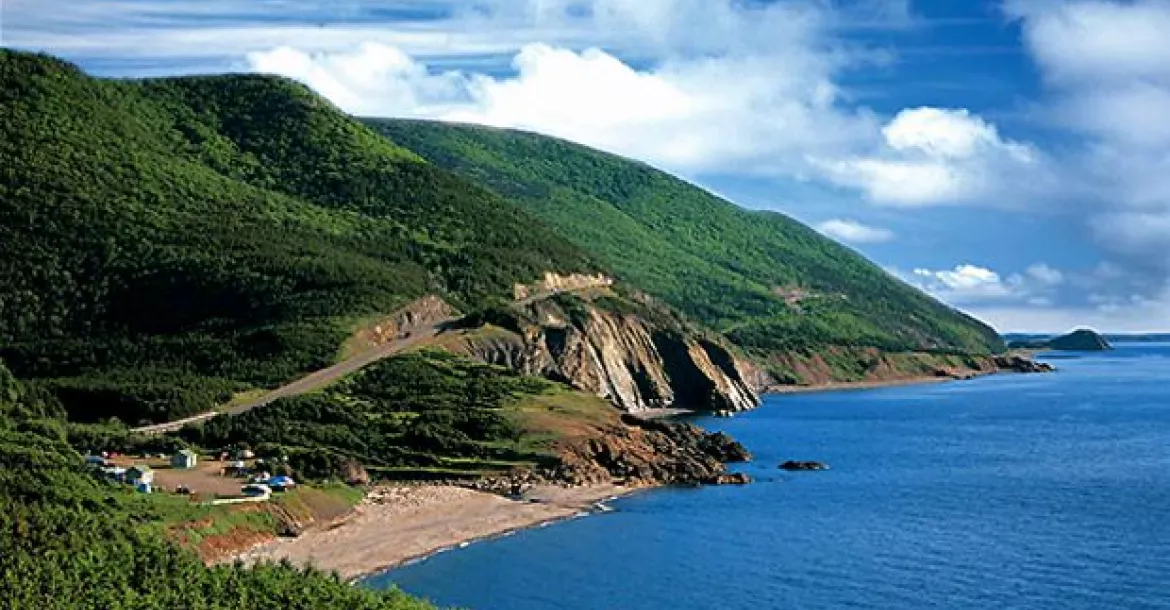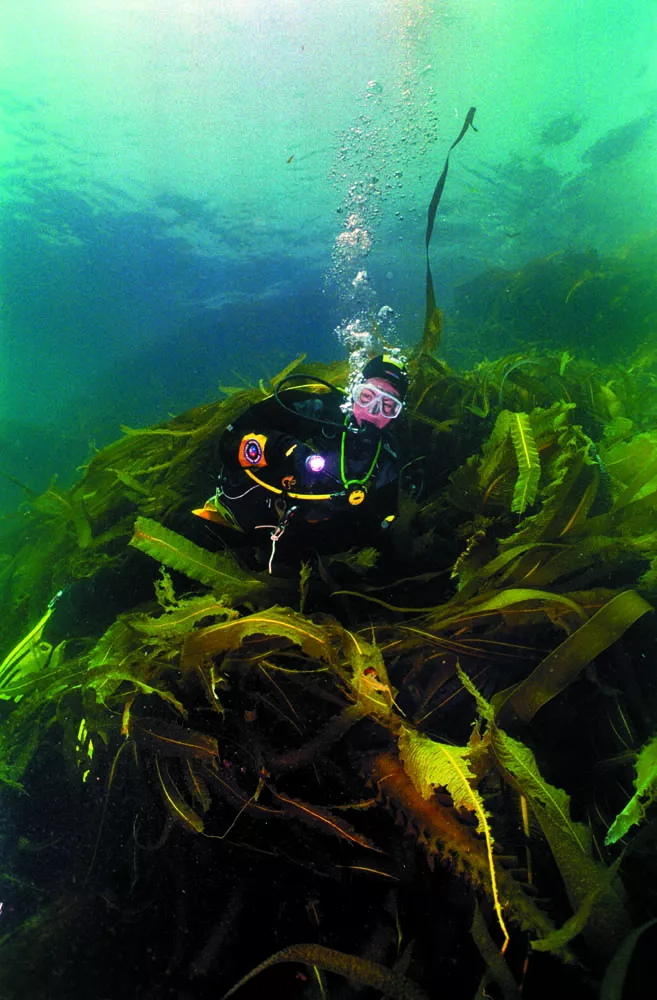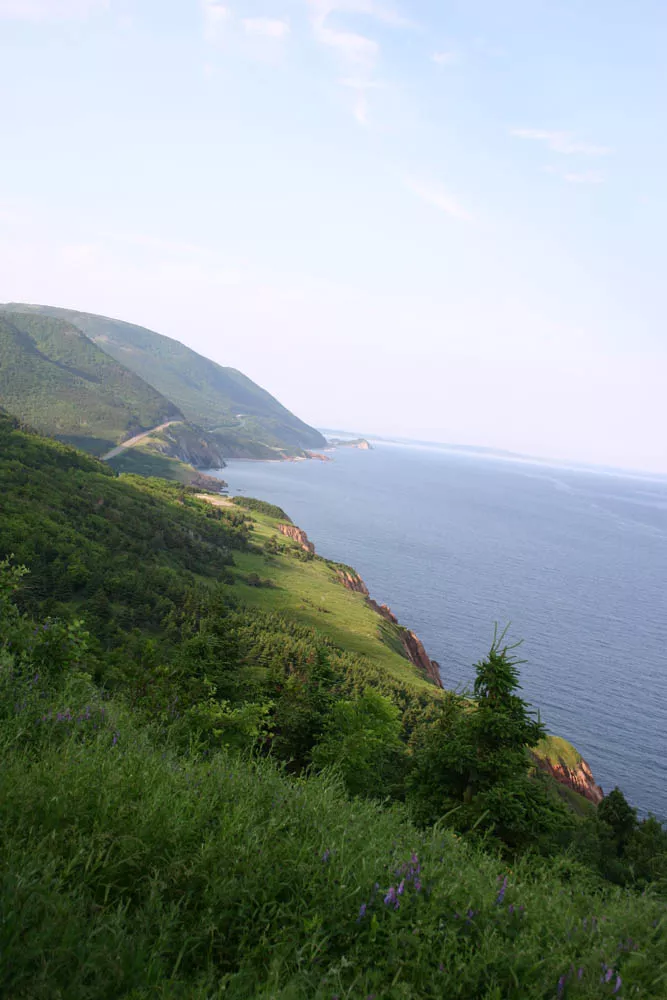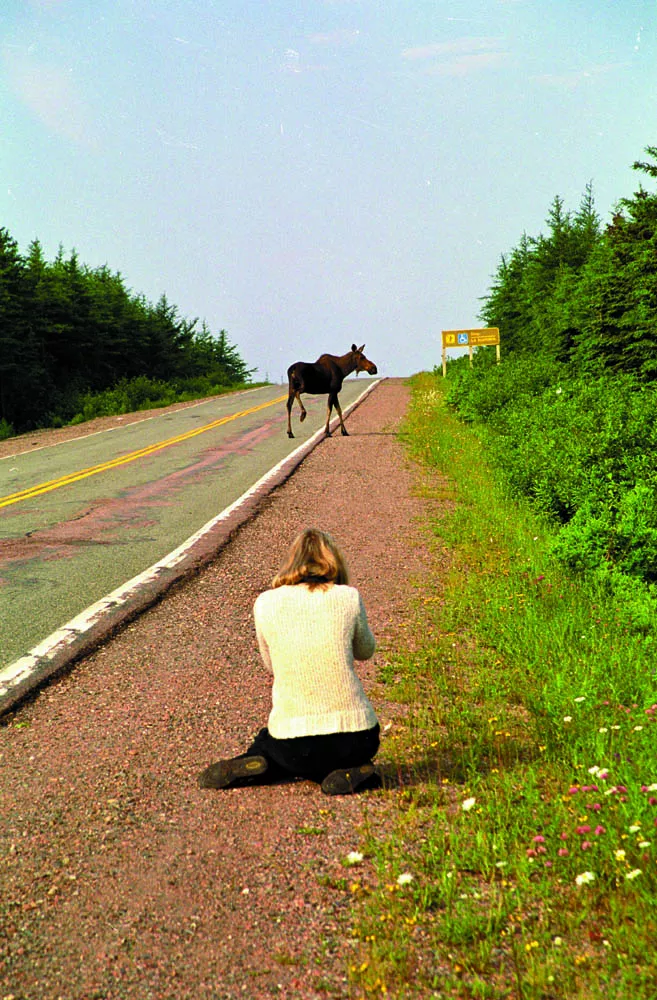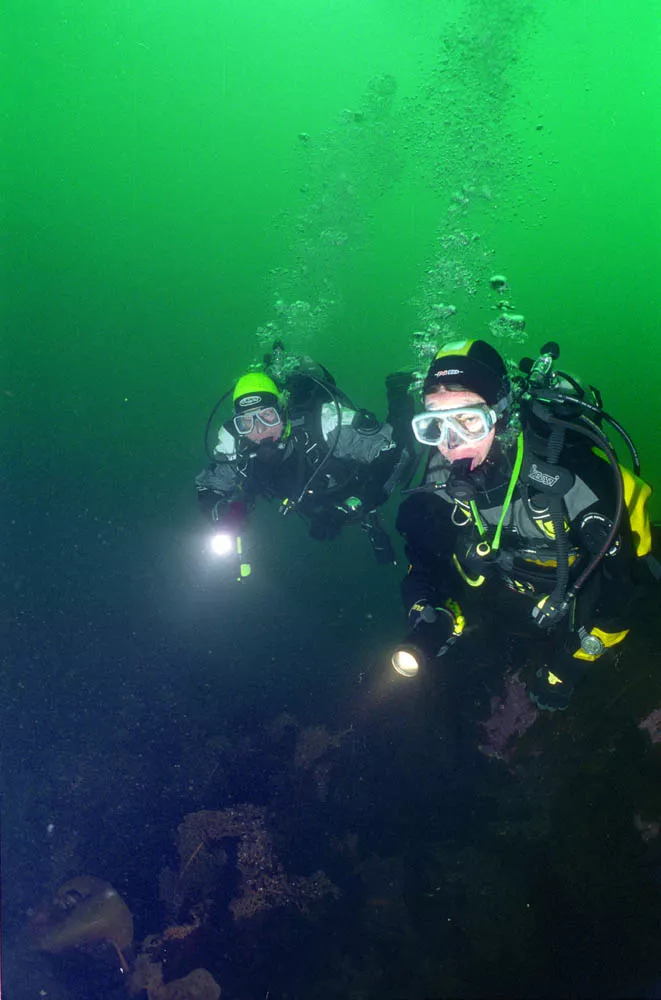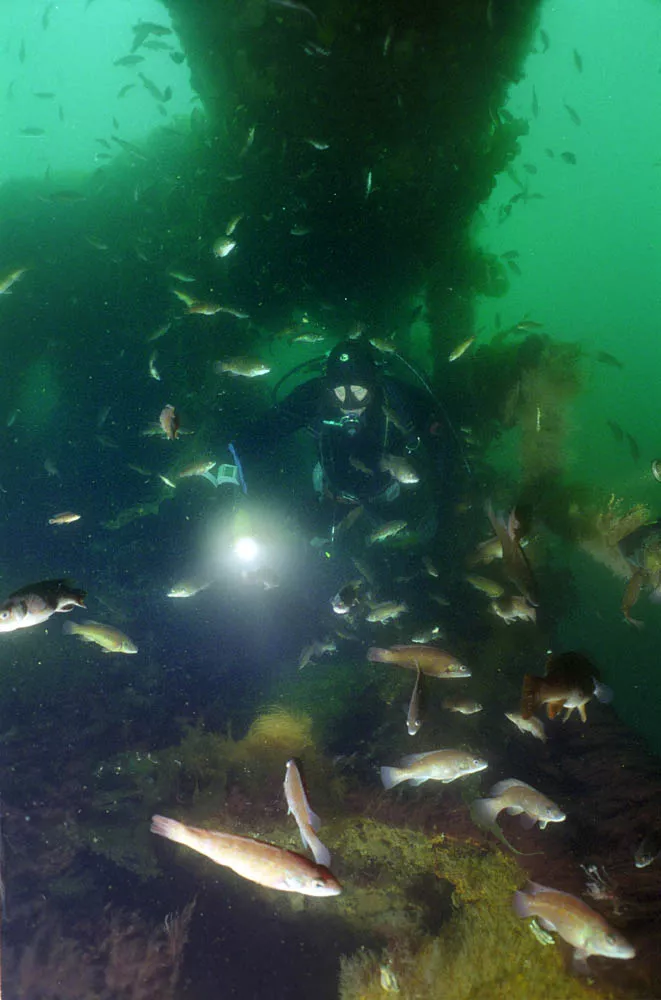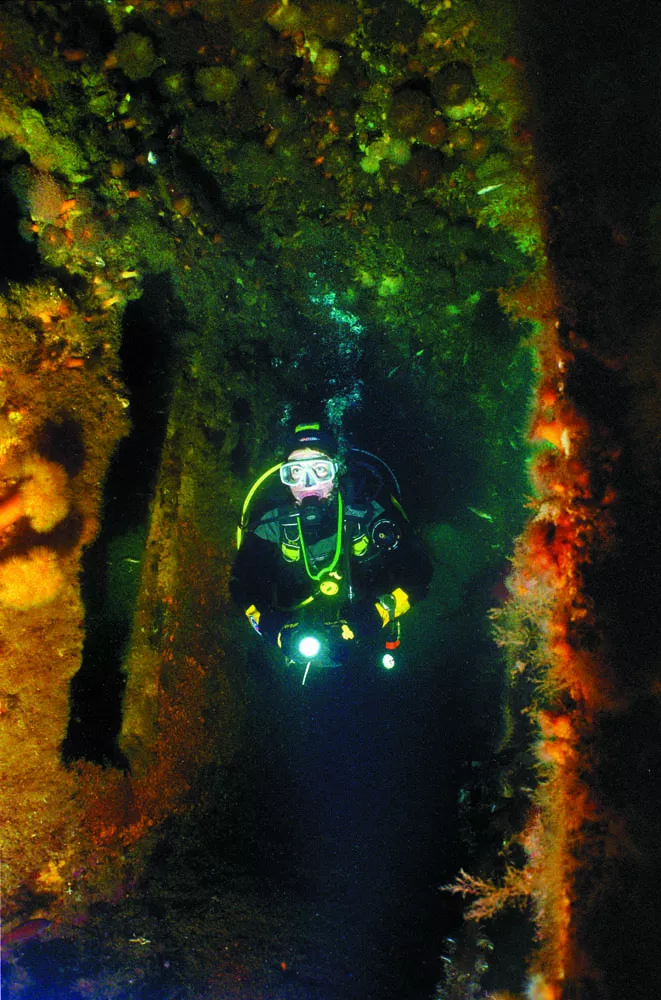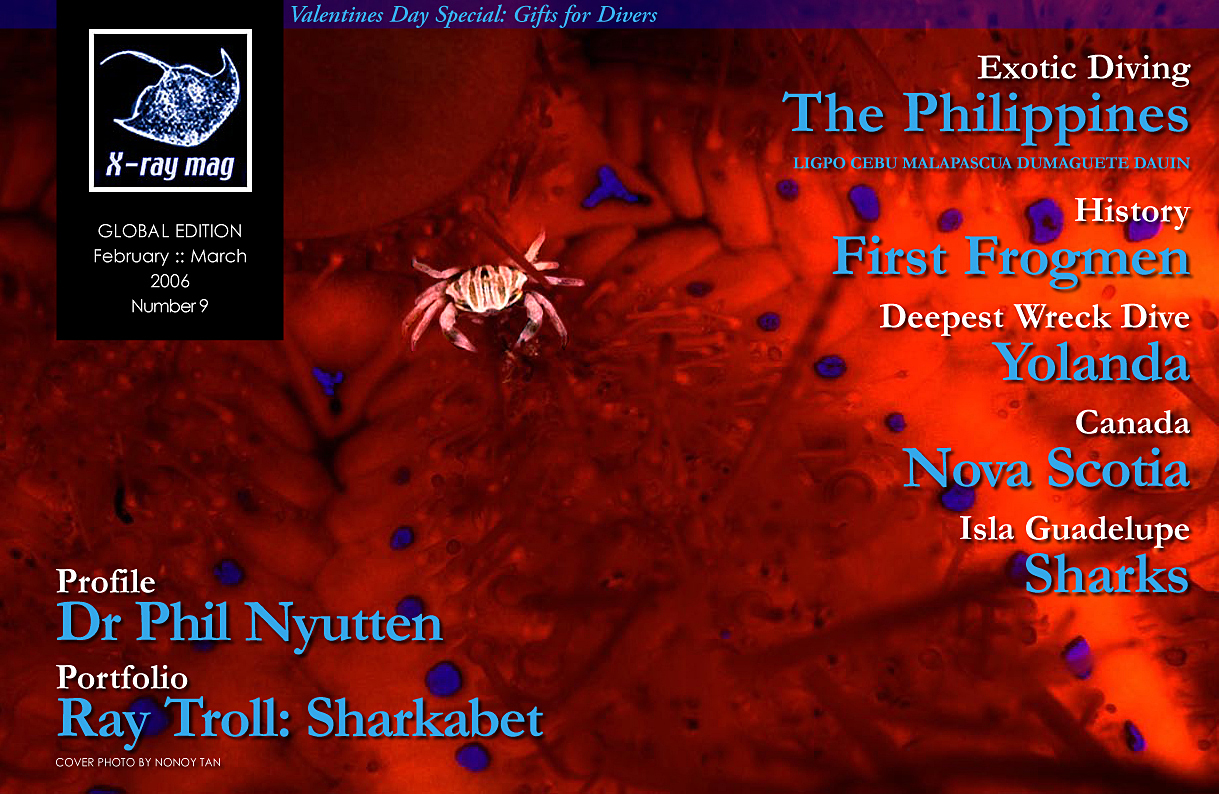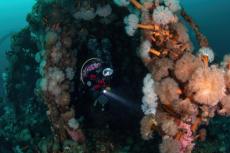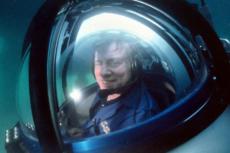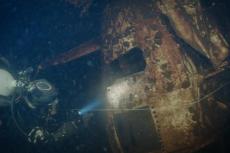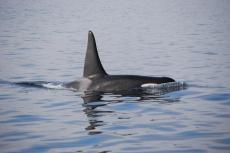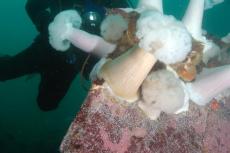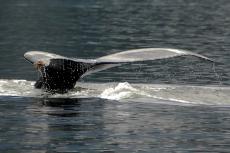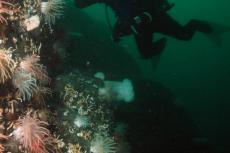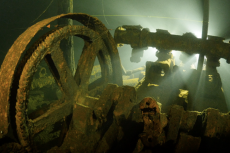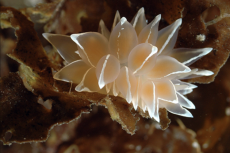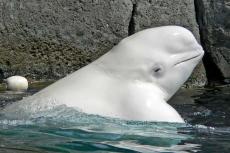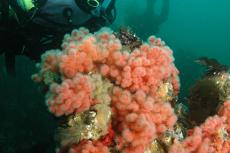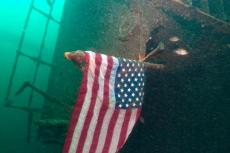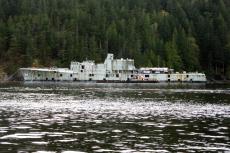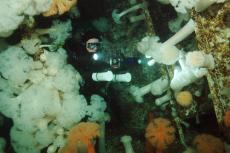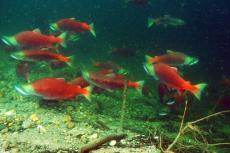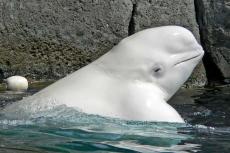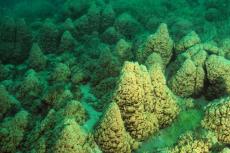I can not stop feeling, that I am at the White Sea in the northern part of Russia. Mirror of blue water, islands and islets, bays and small bays. Clear water, birches along the shores. The difference becomes clear when you step out to the road. Good asphalt, bright yellow marking lines. What else strikes my eyes – everywhere ashore there are placed, as if by a landscape designer, dry tree sculptures, decorated with algae. I can not understand, why there are so many dry trees?
Contributed by
Where did you dive this summer? If a person is satisfied with the brief answer, “In Canada,” that means the person probably missed all his or her grade school geography lessons. Canada is a country of real contrasts. It is bath a densely inhabited strip of land along the US border with huge metropolitan centers such as Montreal and Toronto, where there are sky-scrapers and big businesses, as well as a vast country of wilderness territories in the north stretching out along the coastline.
Vollmer’s Island Paradise Resort
The target of our trip is New Scotland, Cape Breton and Janvrin Island near Isle Madame.
“Vollmer’s Paradise”, a modest name given by its owners to their “estate”, is about a three-hour drive from the province’s capital, Halifax, where the international shipping port and airport are situated.
Nova Scotia is one of ten Canadian provinces. Every territory, like Quebec or Newfoundland, is a separate state with its own specific nature, history and culture, “national features”, flag and slogan. Nova Scotia’s slogan is “Canadian Ocean Playground”. Here, all the life is connected with the ocean.
The history of New Scotland is a history of British-French interaction and foreign relations. The British and French heritage is reflected in the traditions, music, art and cuisine of the area. It is the place where Acadiens settled, Canadian French. It is here, at Cape Breton, that the World Acadian Festival took place this summer.
But the dive center we are aiming for is, in fact, German. By all accounts, it really is, “Alles in ordnung”, which in English means “everything is in order”, and it’s great.
Creature comforts
Suddenly, I open my eyes in the darkness of my room. And see… stars. Various thoughts come: Did I dive too much? Is the roof broken? And only after staring at the darkness and getting used to it did I realize that the stars were fluorescent pieces of smooth material stuck just over my cosy wooden bed.
In each house of the resort, everything is handmade for human comfort by a man. And the name of the man is Arthur Vollmer.
The stars are also made by Arthur who created this hospitable resort on a glorious plot of land with his own hands. Reaching 75 this spring, Arthur is an energetic German carpenter, collector and inventor. His family settled here in Nova Scotia in 1988. Before they moved to the area permanently, the famly came to spend their vacations in Nova Scotia and fell in love with the nature, the lifestyle, which was different from the European way of life, even though there was no time to be bored especially during the summer high season.
Six family houses are situated on the territory, hidden behind the trees, so you would scarcely see them until you came across them. Everything is placed very rationally in the resort.
The fishman’s house is on the shore. There is a club-house, dive center, repair shop and a small restaurant where Maria, Arthur’s wife, will serve you with yellow-like sun-pumpkin soup, or grilled fresh trout. Your salad plate will certainly be decorated with big strawberries.
In the houses, which can host up to 17 people at a time, there are all the modern conveniences arranged within a setting that gives one the illusion that one is deep in a forest. There are two beds, a shower, a toilet and a small kitchen. In the club house, there is a round table, a home library with lots of underwater books and literature, and a screen.
Our hosts are pro-active. In the beginning of the 90s, upon Arthur Vollmer’s initiative, a local organization working for pollution control was created. The group declared that their mission was to clean the island. Then, they collected waste, rubbish and organized its removal for recycling. They promoted the use of cotton shopping bags instead of plastic ones. They got waste containers for sorting rubbish (paper, soft plastics and metals) placed in the center of the community.
For all their hard work, the organization received recognition and approval from the public and governmental environmental agencies. Now, all this positive energy the group generates is being directed mainly in creating and maintaining a real paradise for nature lovers and divers in this corner of the world.
The dive center
The dive center is the beloved child of Ingo Vollmer. He heads the technical dive school, ANDI Germany, and is the owner of the dive center in Marlin. Ingo spends all his summer seasons in Canada organizing dive tours in Nova Scotia and research expeditions to remote places on the Eastern shores of Canada.
I am strongly convinced that the main asset in every business, dive centers included, is atmosphere. It is created by the hosts, first of all, and the guests, that very often become regular customers.
Here, everything is punctual and accurate in the traditional German manner. If we plan to start at 9:00 am, we start at 9:00 am, and not at 9:05. Dinner is at 7:00—that means exactly at 7:00. Such accuracy on the part of the hosts is very attractive to tourists and guests visit this place many times.
Canadians and Americans, driving their own or rented cars, like to be on the road, spend 2-3 days in a spot, dive several times, and drive on to the next location. Europeans also visit the area. They stay for 2-3 weeks, enjoying both diving and nature walking tours, as an escape from city stress.
Mobile phones do not work on every spot of the territory, only in the open sea. So, in the evenings, the club house is a hub of multi-national companies meeting, speaking different languages.
We were at the dive resort at the same time as the editor-in-chief of Tauchen, the largest German dive magazine, and this man’s choice is known to be reliable. We’re talking about his choice in diving, of course.
Diving
We head out to sea on the dive boat Tury. Tury is a work horse, hosting 12 passengers a trip, averaging a speed of 8 knots with a maximum speed of 12 knots. There are two tanks for everyone on board as well as a portable compressor, which is brought along so we can reach the far islands and stay overnight there.
The dive center also has a speed boat, a rib with a huge engine, getting up to 30 knots. It is Ingo’s favorite toy. The rib brings divers to the most remote dive sites within 40 minutes.
We reach the site. When the engine stops, nothing artificial breaks the silence: only the splash of waves and the sounds of birds. We can see a spray of water from time to time port side. It is a whale passing by on its journey to favourite feeding grounds. Now, the whale shows the curve of a large back. At starboard, a huge well-fed gull sits observing.
The main impression I got from the dive was a strong affiliation with nature. Walls reach down to deep depths. They are covered with soft corals, bold free lobsters and crabs, and sea stars of various sizes, shapes and colors.
The water is cold, 5-10˚ C. In the middle of summer, water temperatures warm to 13-15 degrees, but this benefit is accompanied by a decline in visibility. So, it is not the worse place for dry-suit diving.
I descend to the bottom. At about 20 meters, everything is as usual, green calming water, brown kelp forest. Suddenly, a 1.5m seal takes wing just under my feet. He is gray, with dark spots, a nice face and a moustache. I have never ever seen seals underwater before this moment.
My cameramen is occupied with his lenses… I am certain that the animal will go away, and we will miss the opportunity to capture images of the seal. Gone. Suddenly, the seal returns and curiously models just in front of the camera. He makes one round after another.
In the near distance is a female seal with her baby. They are not that curious, staying safely aside, but the father-seal looks right into the camera lense. I watch the seal and cameraman eyeing one another. They look like twin-brothers.
Our hosts listen to my delightful story about the first seal in my life with patience; seals are common here, so I am sure it’s not the first time they’ve heard a seal story from an excited diver.
There are wrecks here too. The Liberian tanker, Arrow, which sunk in 1970, and the Norwegian cargo ship, Balein. They were covered with algae and soft corals, and inhabited by numerous small fishes, each one trying to get a look at me, coming right up to my mask.
Wilderness with a humane face
Canadians are very proud of their “wilderness” and natural environment, and they should be. A must-see side trip for tourists traveling across Nova Scotia is Cabot Trail,a scenic road that lies in the territory of Cape Breton National Park.
Here, you will see moose and deer, red fox, proud white-headed eagles, and Canadian geese. You can watch whales from the shore. Throughout Nova Scotia flow clean salmon rivers. All this is maintained in a natural state. Nature is preserved and protected by the state.
Trails for hikers are marked with special signs identifying scenic views and benches for rest and picturesque bridges over streams. Perhaps, this is the right way to treat nature.
So, when you go to Nova Scotia, bring along a good dry suit and good underwaer, and don’t forget your hiking boots!
For more information about Vollmer’s Island Paradise in Cape Breton, Nova Scotia, Canada, please visit: www.vipilodge.com ■
Published in
-
X-Ray Mag #9
- Read more about X-Ray Mag #9
- Log in to post comments

